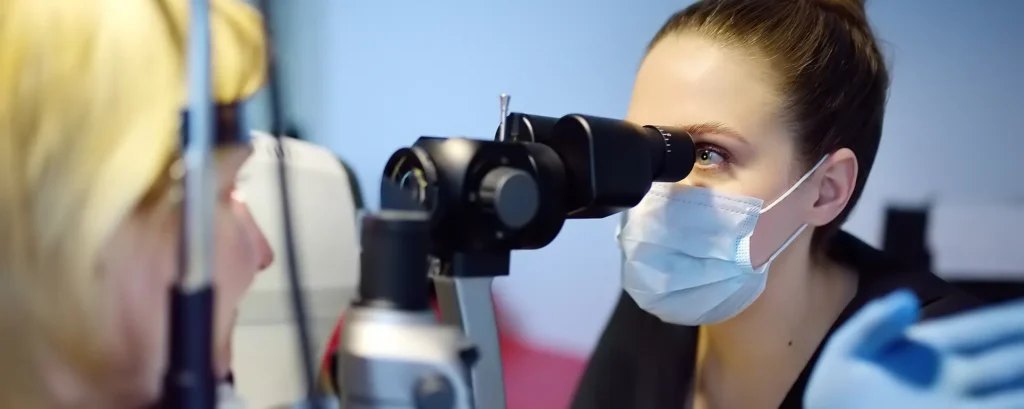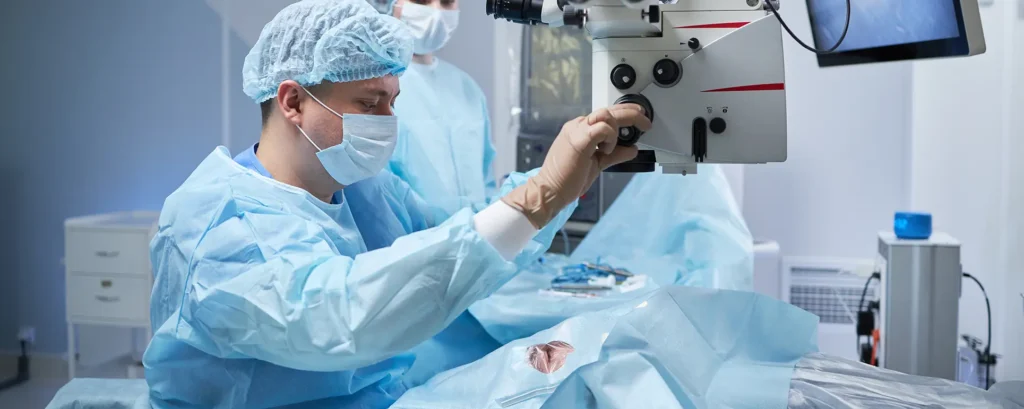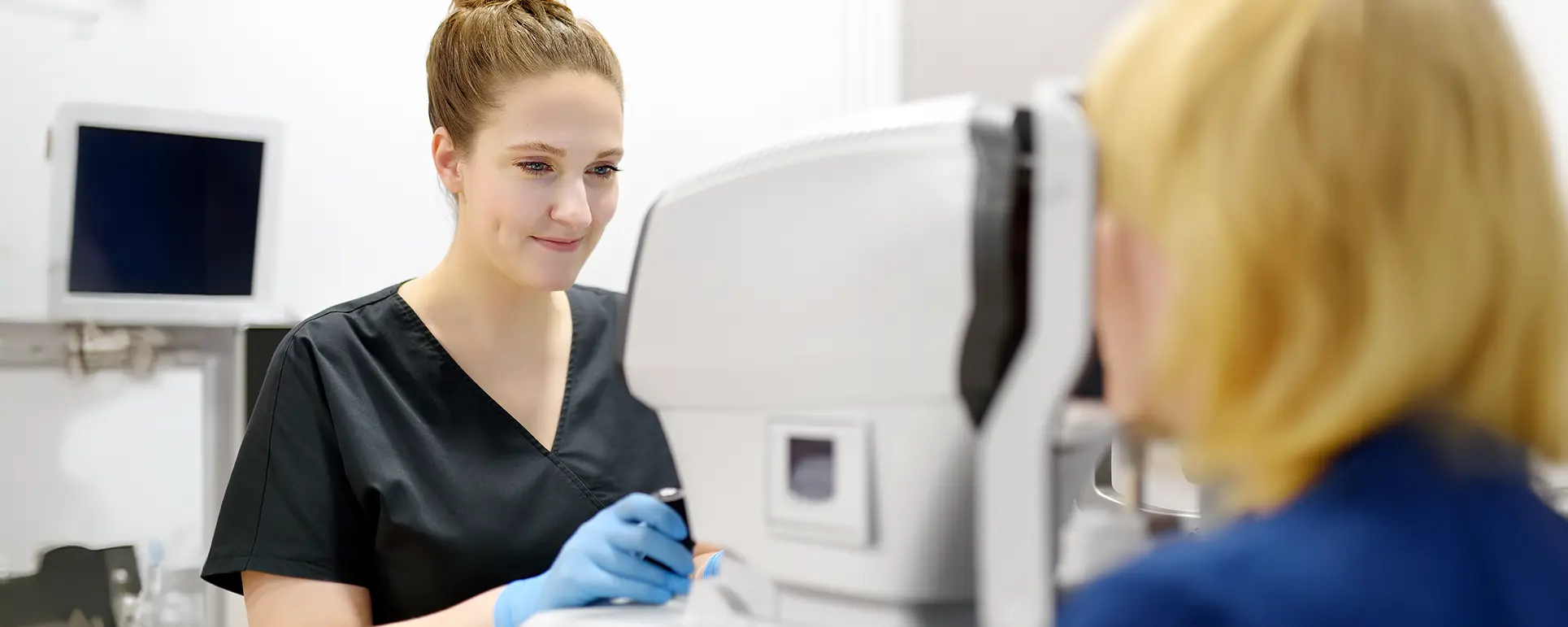If you’ve been told you have glaucoma and cataracts, you might be feeling a bit overwhelmed — and that’s completely understandable. Both conditions can affect your vision in different ways, and the idea of surgery might sound a bit daunting. But here’s the good news: eye surgeons regularly manage both conditions together, and with the right planning, it’s entirely possible to improve your vision and protect your eye health at the same time. In this article, we’ll walk you through what you need to know about managing glaucoma when cataract surgery is on the table — from what your surgeon looks at before operating to how pressure-lowering goals and vision expectations are juggled in a single procedure.
Understanding the Basics: Cataracts and Glaucoma
Let’s start by breaking down the two conditions. Cataracts occur when the natural lens of your eye becomes cloudy, usually due to age. This cloudiness scatters light and makes vision hazy, dim, or yellowed — and it gets worse over time. Cataract surgery involves removing that cloudy lens and replacing it with a clear artificial lens, known as an intraocular lens (IOL).
Glaucoma, on the other hand, is a group of eye diseases where damage to the optic nerve is often caused by high pressure inside the eye (called intraocular pressure or IOP). Unlike cataracts, vision loss from glaucoma is irreversible — so managing the pressure is key to protecting your remaining sight.
What happens when you have both? You’re not alone. Many people with glaucoma also develop cataracts as they get older. And yes, they can be treated together — but your surgeon needs to consider several extra factors to make sure the plan is safe and effective.
How Glaucoma Affects Cataract Surgery Planning
When planning cataract surgery in someone with glaucoma, your ophthalmologist doesn’t just look at the cataract. They take a step back and consider the whole picture — especially the state of your optic nerve, how well your glaucoma is controlled, and whether surgery could risk a pressure spike or further nerve damage.
One of the main challenges is balancing vision improvement with pressure control. Cataract surgery can sometimes lower eye pressure slightly, but in some cases, it can cause a temporary increase. This spike might not be an issue for someone without glaucoma — but for someone with advanced nerve damage, it could worsen vision.
This is why pre-surgical pressure control is so important. Your surgeon will often coordinate with your glaucoma specialist to decide if adjustments are needed before the operation. If your glaucoma is not well controlled, you might need medications or a pressure-lowering procedure first.
Should You Combine Glaucoma and Cataract Surgery?

This is a big question — and the answer depends entirely on your individual case. In many patients with mild or moderate glaucoma, cataract surgery alone is enough to slightly reduce eye pressure. But in others, especially if medication burden is high or pressure is uncontrolled, your surgeon might recommend combining cataract surgery with a glaucoma procedure.
There are a few types of combined surgery. The most common is phacoemulsification (standard cataract surgery) with a minimally invasive glaucoma surgery (MIGS) — such as inserting a tiny stent (like the iStent or Hydrus) to help drain fluid. These are typically safe and don’t add much extra time or risk.
In more severe cases, your surgeon may suggest more traditional glaucoma procedures, like a trabeculectomy or a tube shunt, either at the same time or in a staged approach.
Types of Glaucoma Procedures Done with Cataract Surgery
If your eye pressure is already under good control, you might not need a separate glaucoma procedure. But if not, here are some of the options that might be added to your cataract surgery:
1. MIGS (Minimally Invasive Glaucoma Surgery)
These techniques are often used during cataract surgery to help reduce pressure without too much extra risk. They’re suitable for mild-to-moderate glaucoma and include:
- iStent Inject
- Hydrus Microstent
- OMNI surgical system
- Kahook Dual Blade goniotomy
They work by improving the natural drainage of the eye and can sometimes reduce or eliminate the need for drops.
2. Trabeculectomy
This is a more involved glaucoma surgery used when pressure is high or vision is at significant risk. It creates a new drainage pathway by making a small opening in the white of the eye. It’s usually done as a standalone procedure, but can sometimes be combined with cataract surgery if needed.
3. Glaucoma Drainage Devices (Tubes)
In advanced or resistant cases, a tiny tube (like the Ahmed or Baerveldt implant) may be inserted to allow fluid to bypass the usual pathways. This can be done at the same time as cataract surgery or separately, depending on your needs.
What to Expect from the Surgery

Whether your surgery includes just cataract removal or a combined glaucoma procedure, the overall steps are fairly similar. You’ll be given a local anaesthetic — usually with sedation — and the cloudy lens will be gently removed using ultrasound and replaced with a new lens. If a stent or other glaucoma device is being placed, this usually adds only a few extra minutes to the procedure.
After surgery, your vision may be blurry for a few days to weeks, and you’ll need to use drops to prevent infection and reduce inflammation. If you’ve had a glaucoma procedure as well, your drop regimen may be more complex, and your surgeon will monitor your eye pressure closely during follow-up.
Risks and Complications: What to Watch For
All surgery comes with some risk, and when glaucoma is in the mix, a few additional concerns need to be considered:
- Pressure spikes after surgery can occur — particularly in people with pseudoexfoliation or narrow angles.
- Hypotony, or low pressure, can sometimes happen if too much fluid leaves the eye after certain glaucoma surgeries.
- Corneal oedema, inflammation, or delayed visual recovery may be slightly more common in glaucoma patients.
- Failure of a glaucoma implant over time can occur, requiring additional surgery.
However, with careful planning, most patients do very well — and combining procedures when appropriate can actually reduce long-term risk.
Will Vision Improve If You Have Glaucoma?
One of the most common questions is whether you’ll actually see better after cataract surgery if you already have glaucoma. The answer is usually yes — but how much improvement you’ll notice depends on the extent of optic nerve damage.
If your glaucoma is mild and the cataract is the main thing blurring your vision, you can expect a big improvement. But if you already have field loss or central vision loss from advanced glaucoma, cataract surgery won’t bring back that lost vision — it can only remove the clouding caused by the lens.
That’s why it’s important to have a frank discussion with your surgeon about your expectations before the procedure.
Postoperative Care and Follow-Up
You’ll need a few extra check-ups after cataract surgery if you have glaucoma, especially in the first couple of weeks. Your pressure will be monitored carefully, and your drop regimen might change. If you had MIGS, it may take a few weeks before you see the full pressure-lowering benefit.
Some patients may still need to stay on pressure-lowering drops long-term, even after surgery. Others may be able to stop them altogether — it really depends on how your eye responds.
Long-Term Outlook and Monitoring

Cataract surgery — with or without a glaucoma procedure — is not a cure for glaucoma. You’ll still need regular check-ups to monitor your eye pressure and optic nerve. But for many patients, surgery can make life a bit easier: fewer drops, better vision, and better quality of life overall.
If you’ve had a successful MIGS implant, for example, and your pressure is stable, you might get a few years without needing further surgery. But glaucoma is a lifelong condition, and staying on top of follow-up appointments is essential to keep things in check.
FAQs: Glaucoma and Cataract Surgery
- Can cataract surgery help lower my eye pressure if I have glaucoma?
Yes, in many cases cataract surgery can lead to a modest drop in intraocular pressure, particularly in people with angle-closure or early open-angle glaucoma. This pressure-lowering effect happens because removing the thickened lens creates more space in the front part of the eye, which can improve fluid drainage. However, the extent of pressure reduction varies from person to person. For patients with advanced glaucoma or poorly controlled pressure, cataract surgery alone may not be enough — and that’s where combined procedures with glaucoma surgery are considered to achieve safer, long-term control. - Will I still need to take glaucoma drops after cataract surgery?
This depends on how well your eye responds to surgery. Some people find that their pressure improves enough after cataract surgery (especially if a MIGS procedure is done at the same time) that they can stop or reduce their drops. Others, particularly those with more advanced disease, may still need to stay on one or more pressure-lowering medications long-term. Your eye pressure will be closely monitored in the weeks and months after surgery, and your specialist will adjust your treatment plan accordingly. - Is it safe to combine cataract and glaucoma surgery into one procedure?
For many patients, combining the two surgeries is not only safe but also convenient and effective. It reduces the need for separate surgical recoveries and can help lower eye pressure more consistently in a single procedure. However, it does require careful planning, and the risks can be slightly higher than cataract surgery alone. Surgeons will take into account your type and severity of glaucoma, the structure of your eye, and your pressure goals to decide if a combined operation is right for you. - What is MIGS and when is it used during cataract surgery?
MIGS stands for minimally invasive glaucoma surgery, and it includes techniques like the iStent, Hydrus Microstent, or goniotomy devices that help fluid drain out of the eye more effectively. These are often inserted during cataract surgery for patients with mild-to-moderate glaucoma. MIGS procedures are generally quick, low-risk, and don’t require major incisions or stitches. They’re a good option if you want to reduce your need for drops but don’t need the stronger pressure-lowering effect of more invasive glaucoma surgeries like trabeculectomy. - Will cataract surgery restore vision if I’ve already lost sight from glaucoma?
Cataract surgery can significantly improve your vision if the blurring is mainly due to the cataract. However, any vision loss caused by glaucoma — particularly damage to your visual field or optic nerve — is unfortunately permanent. The surgery won’t bring back lost peripheral vision, but it can make your remaining sight clearer and sharper by removing the cloudy lens. This is why it’s important to have a realistic discussion with your surgeon about what to expect based on the stage of your glaucoma. - Can cataract surgery make glaucoma worse?
In a small number of cases, yes — but it’s not common if the procedure is planned properly. Some patients may experience a temporary spike in eye pressure in the hours or days after surgery, which can be risky if the optic nerve is already damaged. That’s why surgeons often adjust glaucoma medications before surgery and monitor pressure closely after the operation. With good preparation and follow-up, the risk of permanent worsening is very low, especially if you’re under the care of a glaucoma-aware surgical team. - Should I have glaucoma surgery first, or cataract surgery?
The order depends on your individual situation. If your glaucoma is advanced or your pressure is dangerously high despite medication, your specialist might recommend a glaucoma procedure first to protect your vision. But if the cataract is affecting your sight more, or if a combined surgery is feasible, then doing both together is often the most efficient and beneficial route. Your eye team will weigh up which condition poses the greater risk at the time and tailor the plan around that. - How long will recovery take if I have both surgeries together?
Recovery time is slightly longer when glaucoma and cataract surgeries are combined, but the difference isn’t dramatic for most patients. You can expect blurry vision for the first few days, and you’ll likely need eye drops to manage healing and inflammation for several weeks. Follow-up visits are also more frequent in the first month. If you’ve had a MIGS procedure, your routine may be fairly similar to a standard cataract recovery. But for more invasive glaucoma operations, healing and vision stabilisation may take longer. - What are the risks of having both surgeries at once?
Combining surgeries does carry slightly more risk than cataract surgery alone, particularly in terms of post-op pressure fluctuations and inflammation. There may be a higher chance of needing additional pressure-lowering treatment later, or experiencing complications like hypotony (low pressure) if the glaucoma procedure drains too aggressively. That said, the benefits often outweigh the risks — especially for patients who need pressure control urgently or want to reduce their need for daily drops. These decisions are made on a case-by-case basis. - How do I choose a clinic or surgeon experienced in both glaucoma and cataract care?
Look for a centre with both cataract and glaucoma specialists on the same team or who frequently work together. Experience with combined procedures — especially MIGS or more advanced surgeries — is crucial. You should feel confident that the surgeon has reviewed your glaucoma history thoroughly and has a clear plan for how to manage your pressure during and after surgery. Clinics like London Cataract Centre offer access to highly trained surgeons who collaborate closely with glaucoma specialists to deliver personalised care tailored to your eye health needs.
Final Thoughts: Planning Ahead with the Right Team
If you’re dealing with both cataracts and glaucoma, don’t worry — this is a very common situation, and one that experienced eye surgeons handle regularly. The most important thing is to plan your treatment with a team that understands your condition fully and works together to personalise your care.
At London Cataract Centre, our surgeons have experience in both cataract and glaucoma management. Whether you need a simple lens replacement or a combined pressure-lowering procedure, we’ll walk you through every step to make sure your vision is protected and your recovery is smooth.
References
1. National Institute for Health and Care Excellence (NICE). (2022) Glaucoma: diagnosis and management. NICE guideline [NG81]. London: NICE.
Available at: https://www.nice.org.uk/guidance/ng81 (Accessed: 8 August 2025).
2. American Academy of Ophthalmology (AAO). (2023) Cataract surgery in patients with glaucoma. Available at: https://www.aao.org/eye-health/diseases/cataract-surgery-glaucoma (Accessed: 8 August 2025).
3. Saheb, H. and Ahmed, I.I.K. (2012) ‘Micro-invasive glaucoma surgery: current perspectives and future directions’, Current Opinion in Ophthalmology, 23(2), pp. 96–104. Available at: https://journals.lww.com/co-ophthalmology/fulltext/2012/03000/Micro_invasive_glaucoma_surgery__current.6.aspx (Accessed: 8 August 2025).
4. Ahuja, Y., Huang, J., Martin, C., et al. (2021) ‘Cataract surgery outcomes in patients with coexisting open-angle glaucoma’, Journal of Cataract & Refractive Surgery, 47(12), pp. 1527–1534. Available at: https://www.jcrsjournal.org/article/S0886-3350(21)00567-6/fulltext (Accessed: 8 August 2025).

